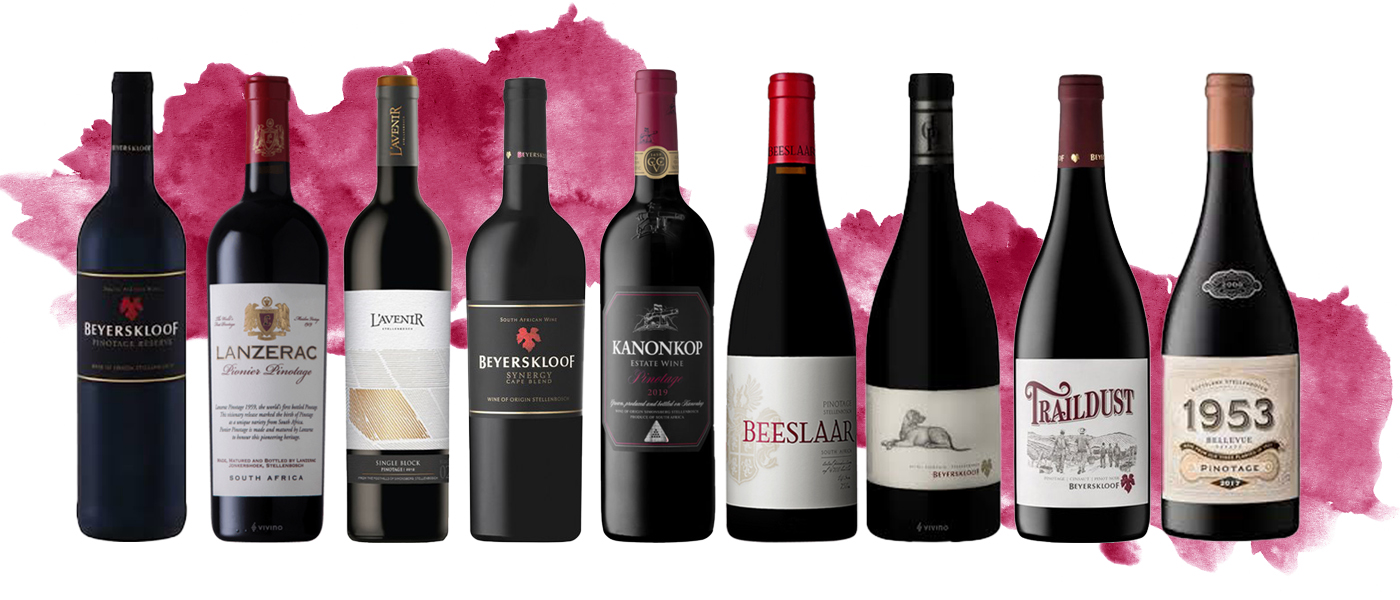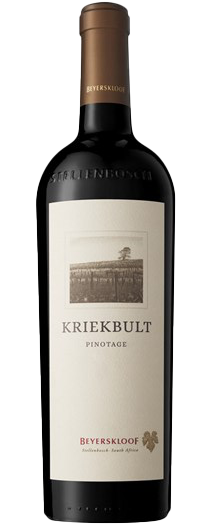CHEERS | WINE

Is pinotage having a moment?
A grape which was created by Stellenbosch academic Professor Abraham Izak Perold crossing pinot noir with cinsaut – known locally as hermitage – almost 90 years ago has tongues wagging once again. In a good way!

It used to be that wine geeks the world over loved to hate pinotage. Its bouquet was likened to boiled sweets or automotive paint/duco, while some critics described its taste as being reminiscent of rusty nails and burnt rubber. But the worm turns and there’s a growing groundswell of support with more and more winemakers now making their version of SA’s national grape.
In a recent article for News24, wine writer Dalene Fourie quoted the local godfather of pinotage, Beyers Truter: “If people are against it, you know you're going the right way.” And he would know, having made wine from this grape for 40 years, initially at Kanonkop and then at Beyerskloof.
One thing to remember about pinotage is that it was created 98 years ago as a bit of a viticultural experiment – and for decades was never a commercial proposition. The first labelled example was the 1959 Lanzerac pinotage which was sold by Stellenbosch Farmers’ Winery. So, sticking a pin in that “commercial release” date of 1959, it means that pinotage as a wine style is just 64 years old. Compared with established wines such as shiraz and cabernet which have been made for centuries, it needs to be acknowledged that pinotage is a work in progress. There’s still a lot to be learned.
Just in the last decade-and-a-half major strides have been taken. Big respect must be paid to the Pinotage Association which has supported extensive research into things like methods of fermentation, yeasts and the use of nutrients, even whether bushvine or a trellised vine produces superior wines.
There were always traditionally two styles of pinotage favoured by producers: the serious “made to age” ones and the juicy, upfront, glug-them-down-now examples. The first were obviously given serious attention with time in expensive French oak barrels which provided structure and assisted in the ability to mature with distinction, taking on something of its pinot noir parent’s characters as the years went on.
Kanonkop is the shining example of having made wine to last – and has even helped to push the boundaries of what pinotage is capable of achieving in the Stellenbosch farm’s 50 year existence. In 2006 it bottled its first ever Kanonkop Black Label pinotage – and charged R1 000 a bottle for it! It was unheard of for a pinotage to command that sort of price – but it was from a single vineyard, planted 50+ years earlier and the total production was just 1 000 bottles. It truly startled the market but 15 years later, the wine now costs more than double that price … and still sells out! It blazed a trail that other pinotage-focussed producers have followed. Lanzerac’s Pionier pinotage pays homage to its being the original – and will set buyers back about R1 150. Another occupying that sort of price bracket is Bellevue’s 1953, a nod to the date of their original pinotage plantings, which sells for R999. Beyerskloof’s flagship, Diesel – named after Beyers Truter’s beloved Great Dane-cross dog – now retails for R1 400. Then there’s Beeslaar pinotage which sells for R700 a bottle or L’Avenir’s single block pinotage for R550.

The second general style was more in the mould of its other – more fun! – parent, cinsaut. Cinsaut is a grape which has long been known for its sheer palatability and appeal. Bright cherry, berry, plum flavour and oodles of juicy succulence make it a lovely and easy wine to enjoy – and those qualities often were prominent in the easy, more commercial pinotages. This was the kind of wine to be enjoyed at a weekend braai or with a pizza or bowl of spaghetti bolognaise for a casual midweek supper.
(As an interesting side note, Cinsaut has made a comeback in the past few years with winemakers appreciating the role it played in some of the country’s most beloved – and long-lasting wines. International critics have raved over rediscovered blends from the 1960s and 1970s, mixes of cabernet sauvignon and cinsaut. As a result, there are more and more labels of cinsaut making it to retail shelves as winemakers experiment with this grape.)
Having taken over the keys to the cellar from his father, Anri Truter of Beyerskloof knows as much about pinotage as his famous father. He is bullish about the future of this wine – so much so that he added another wine to the range which already features four straight pinotages, a pinotage rosé, a pinotage chenin, pinotage ‘port’ and three other red blends featuring pinotage, Faith, Synergy and Traildust! The new wine – Kriekbult pinotage – is their first single vineyard bottling, but it’ll have to go a long way to rival the popularity of the bog-standard Beyerskloof pinotage: it sells around 1.5 million bottles worldwide every year! “People just love it! It goes with everything from a first date to a braai with the boys,” Truter joked. It’s a wine that is both palate and pocket friendly at R110 a bottle.
The third style, coffee pinotage, has featured in CHEERS mag’s pages previously and remains a crowd favourite with its overt coffee bean and roasted flavours.
But the biggest takeaway from recent developments is that there has been tremendous progress in changing people’s negative perceptions of the wine. Riper, fruitier styles which are lighter-bodied and easily enjoyable –without those confected boiled sweetie or burned rubber associations – are the order of the day. Wines which celebrate the cinsaut-driven almost ethereality and lightness while also offering density and depth is what is exciting a new legion of fans. And in that respect, pinotage is something of a reflection of South Africa’s diversity since it’s made across a spectrum of differing expressions – and there’s room for all preferences and tastes.

